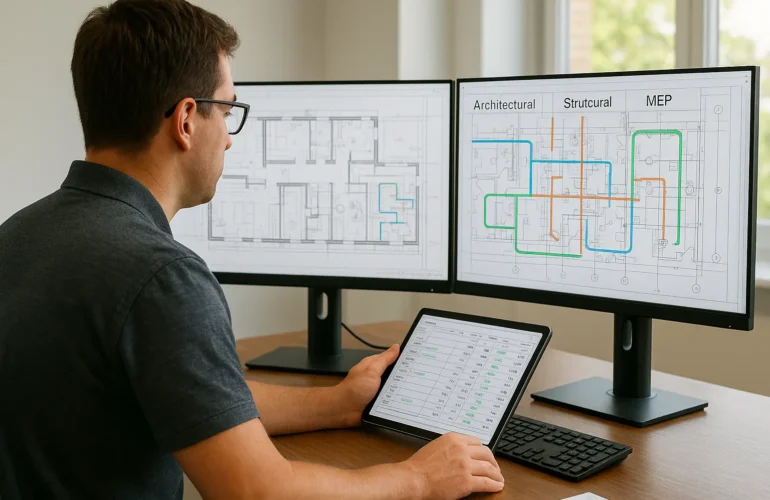Introduction
Accurate estimation is the cornerstone of effective project management. Whether you’re working
on a construction project, software development, or any other project type, the ability to estimate
costs, timelines, and resources accurately can significantly impact the success or failure of a
project. In project management, estimation goes far beyond simply calculating the cost of
materials and labor—it’s a critical tool for planning, executing, monitoring, and controlling the
project’s scope, budget, and schedule.
In this comprehensive guide, we’ll explore the crucial role that estimation plays in project
management. We’ll discuss how accurate estimates contribute to successful projects, key
estimation techniques, and best practices to ensure that your estimates align with your project’s
objectives.
The Importance of Estimation in Project Management
Estimation is the process of predicting the time, cost, and resources required to complete a
project successfully. Accurate estimates are not just about creating a budget; they are essential
for every stage of the project lifecycle. Here are some of the key reasons why estimation is so
important in project management:
- Project Planning and Scheduling Estimation helps project managers set realistic
timelines for completing tasks, milestones, and deliverables. By knowing how much time
each task will take, project managers can create a detailed schedule that ensures all
aspects of the project are completed on time. - Resource Allocation Accurate cost estimation allows project managers to allocate
resources, such as labor, materials, and equipment, effectively. This prevents resource
shortages, delays, or over-allocation, ensuring the project runs smoothly. - Risk Management Estimation also plays a critical role in identifying potential risks. By
estimating potential costs, timelines, and resources required for each task, you can
uncover potential bottlenecks or issues that could arise, allowing you to proactively
address them. - Budget Management Accurate cost estimation ensures that the project stays within
budget. By tracking actual expenses against the initial estimates, project managers can
spot any discrepancies and take corrective action before the costs spiral out of control. - Stakeholder Communication Clients and stakeholders rely on accurate estimates to
understand the scope, timeline, and financial requirements of a project. By providing
clear, data-driven estimates, project managers can establish trust and keep stakeholders
informed throughout the project lifecycle.
How Estimation Supports the Project Lifecycle
Estimation is crucial at various stages of the project lifecycle. Let’s break down how accurate
estimates support each phase:
1. Initiation Phase: Defining Project Scope and Budget
During the initiation phase, a project manager works with the client and stakeholders to define
the project’s goals, scope, and budget. Here, high-level estimates based on similar past projects
or historical data are used to develop a rough budget and timeline. While these early estimates
may lack detail, they are crucial for determining whether the project is feasible and aligning
expectations with available resources.
2. Planning Phase: Detailed Estimation for Execution
As the project moves into the planning phase, a more detailed estimation process begins. Project
managers break down the entire project into smaller tasks and estimate the time, cost, and
resources needed for each one. This is the stage where the project schedule is finalized, resource
allocation plans are set, and the project budget is refined. At this point, estimation tools and
techniques such as work breakdown structures (WBS), Gantt charts, and resource leveling
become vital.
3. Execution Phase: Tracking and Monitoring Progress
Once the project begins, estimates become a basis for tracking progress and managing changes.
Project managers continuously compare actual performance to the estimated timeline, cost, and
resource utilization. Estimation is key in identifying variances, monitoring milestones, and
adjusting the schedule or budget as needed.
4. Closing Phase: Evaluating Performance
In the closing phase, estimates are compared with actual outcomes. This post-project evaluation
provides valuable insights into the accuracy of the original estimates and offers lessons learned
for future projects. Reviewing the estimates in the context of the project’s actual performance
helps identify areas for improvement in future estimation efforts.
Techniques for Accurate Project Estimation
Estimation techniques vary depending on the type and complexity of the project. Below are some
commonly used methods in project management:
1. Analogous Estimating
Analogous estimating, also known as top-down estimating, is based on historical data from
similar projects. This method involves using the actual costs or durations of past projects to
estimate the costs or durations of the current project. While it is relatively quick and simple, it
may lack accuracy if the previous projects were significantly different.
Pros:
- Quick and easy to apply
- Useful for high-level estimates in the early project stages
Cons:
- Less accurate for unique or complex projects
2. Parametric Estimating
Parametric estimating uses mathematical models or statistical relationships between variables to
predict costs or durations. For example, you might use cost per square foot to estimate the cost of
construction for a building. This method can be more accurate than analogous estimating when
the variables are well-defined.
Pros:
- More accurate than analogous estimating for projects with known variables
- Effective for large-scale projects with standardized components
Cons:
- Requires historical data and reliable parameters
- Can be complex to apply in some cases
3. Bottom-Up Estimating
Bottom-up estimating involves breaking down the project into smaller tasks and estimating the
cost and duration for each task individually. These estimates are then rolled up into an overall
project estimate. This technique provides highly detailed and accurate estimates, but it can be
time-consuming.
Pros:
- Provides highly accurate and detailed estimates
- Best for complex projects
Cons:
- Time-consuming and labor-intensive
- Requires detailed task breakdowns
4. Three-Point Estimating
Three-point estimating uses three values to define a range of possible outcomes for an estimate:
the optimistic estimate (best case), the pessimistic estimate (worst case), and the most likely
estimate. These estimates are then combined to provide a weighted average, offering a more
realistic picture of the project’s potential.
Pros:
- Accounts for uncertainty and risk
- Provides a range of possible outcomes
Cons:
- Requires careful judgment to determine the three estimates
- Can be complex to apply in some projects
5. Expert Judgment
Expert judgment relies on the expertise and experience of individuals who have worked on
similar projects. This method can provide valuable insights into potential challenges and costs
based on the knowledge of professionals who understand the intricacies of the project type
Pros:
- Provides valuable insights from experienced professionals
- Useful when historical data or parameters are unavailable
Cons:
- Subjective and dependent on the expertise of the individual
- May lead to bias or overconfidence in the estimates
Best Practices for Effective Estimation in Project Management
To ensure the accuracy and reliability of your project estimates, follow these best practices:
1. Involve Key Stakeholders Early
Involving key stakeholders, including clients, team members, and subject matter experts, early in
the estimation process ensures that all perspectives are considered. This helps identify potential
risks, resources, and requirements that may affect the estimate.
2. Use Historical Data
Whenever possible, use historical data from similar projects to inform your estimates. This
provides a benchmark for comparison and can improve the accuracy of your predictions.
3. Break the Project into Manageable Tasks
Breaking the project down into smaller, more manageable tasks allows for more accurate
estimates. Use work breakdown structures (WBS) to identify each component of the project and
estimate the time and resources needed for each.
4. Account for Risks and Uncertainty
Recognize that every estimate has a level of uncertainty. Use techniques like three-point
estimating or Monte Carlo simulations to account for potential risks and variability in your
estimates.
5. Regularly Monitor and Adjust Estimates
Estimation is not a one-time activity. Regularly track actual performance against the original
estimates and adjust as necessary. If the project scope or requirements change, update the
estimates to reflect these changes.




